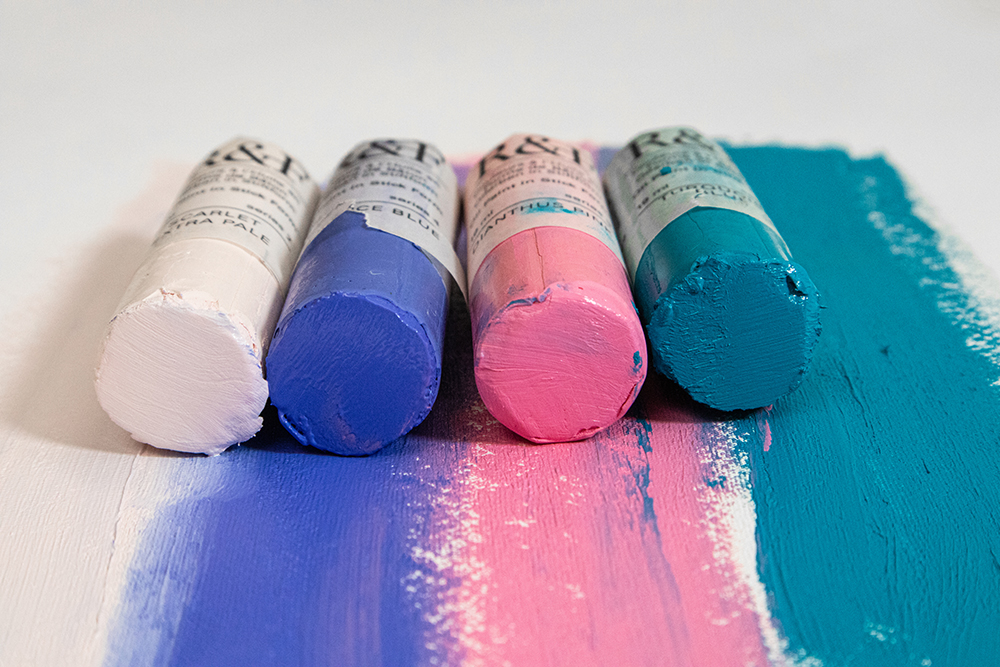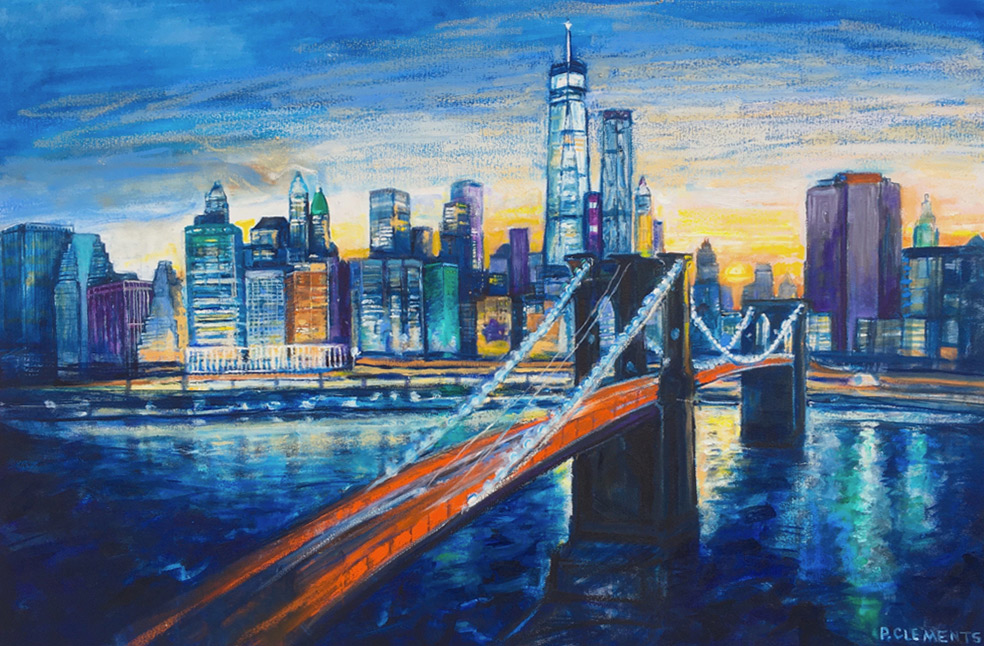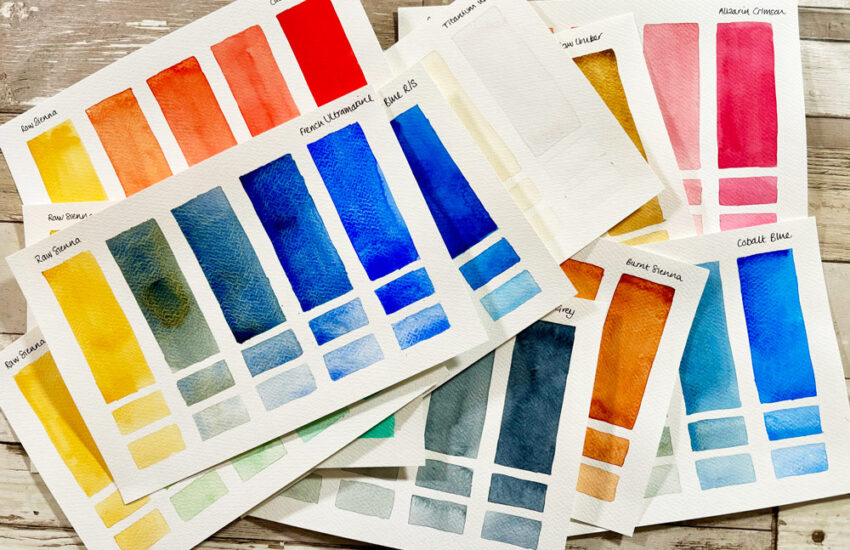Breaking Down The Barriers With R&F Pigment Sticks
I was delighted to be asked to do a product review of the R&F Pigment Sticks range. As a professional artist I find R&F sticks are an excellent compliment to traditional oils especially when I want to cover large areas like skies. They’re also great for adding bold marks to areas that I want to emphasise or highlight in my painting. In this article I will also share with you how I use R&F Pigment Sticks in my work.
What are R&F Pigment Sticks

R&F Pigment Sticks are a genuine oil colour, shaped into a stick form because of their high wax content. They are similar to oil pastels, but contain a higher pigment concentration and less binder. Each pigment stick is made using only the finest paint-making ingredients – with no extenders, fillers or additives used. Natural waxes (both beeswax and plant wax), linseed oil and pigment make up every stick. These ingredients result in a painting tool with smooth application, a soft lipstick-like consistency and clean colour. Unlike oil pastel, Pigment Sticks contain drying oils so they will dry over time, are not prone to smudging and can be varnished.

What can you do with them?
Pigment Sticks are a versatile product – you can use them for drawing, painting and mixed media artwork. You can use them to draw or paint directly onto your surface to produce quick sketches. Their stick shape removes the barriers between you and your paint, allowing you to interact with your paint directly. It is advisable to use plastic gloves or a barrier cream when using the sticks in case you have any cuts also as the sticks have a soft consistency it can get messy! Available in a wide range of colours and sets. The trial sets are an affordable option to try out how you can incorporate them into your practice.

You can create a wide range of effects with them, from thin, transparent layers to thick, opaque marks. Interesting effects and textures can be achieved with the Pigment Sticks by layering them and then scraping away layers of pigment. They can be easily manipulated with painting knives, brushes and brayers to achieve different effects. They can be applied directly to paper, canvas, or other surfaces. Blend with other colors, use in conjunction with traditional oil paints from tubes or thin them with solvents for different effects.
How I use Pigment Sticks
I originally only painted oil paints, however, after attending a workshop I discovered pastel in a big way. I loved the pure pigmentation of soft pastels and being able to draw with them. The downside of them was they were very messy and could really only be used on paper. When I discovered Pigment Sticks it seemed to me to bridge a gap. Easy to use like soft pastels but with the added advantage of being able to draw directly onto the canvas and cover large areas. I find I have more control and like to use them to make statement marks. Like traditional oil paints I can also use them over an acrylic underpainting or sketch.
The early stages of my painting process

My process involves sketching out my subject in either acrylics or oil paints. I then add a layer of oil paint before deciding where I am going to use my Pigment Sticks.
Stage 2

In the next phase of my painting I use traditional oil paints to paint the picture. The Pigment Sticks are then used to paint over large areas, like the sky, to give it texture. I overpaint with the Pigment Sticks to make areas stand out with bold lines. I’ve used a bright intense Cadmium Red Light to define the lines of the bridge. I love this colour and it’s intensity and I feel it makes the painting.
The finished painting

In my finished artwork of the New York Freedom Tower I have used the Pigment Sticks in large areas on the canvas.
- I used a Neutral White Pigment Stick over a blue background for the sky giving me a lovely textured finish and breaking up the flat colour.
- I have used my absolute favourite colour, Cadmium Red Light stick, on the bridge it’s one of the best reds I have discovered – a very rich bright red.
- On the water I have found the King’s Blue Pigment Stick has softened the dark under painting. The Pigment Sticks also work well to high-light the reflections in the water.
- I have also blended the Neutral White Pigment stick on the yellow background where the sun is setting. This has softened the background so it doesn’t stand out too much.
- Finally I drew the black lines of the bridge and its structure and along the river bank with an Ivory Black Pigment Stick.
Before and After Pigment Sticks are Applied
Below is another one of my paintings where you can see how I have used Pigments Sticks, especially in the background. I will definitely continue to use R&F pigment sticks on my paintings. It adds another dimension for me and makes them so much more interesting. The texture that they can bring to a painting helps make it feel more free and not so tight.

In Summary
- Lovely buttery consistency
- Easy to use and draw directly onto the canvas
- Creates great texture especially on large areas
- Bridges the gap between soft pastels and conventional oil paints
- Excellent quality & high pigmentation, reflected in the price
- R&F Pigment Sticks are available in trial sets which are a great way to try them out before opting to buy a larger set.









